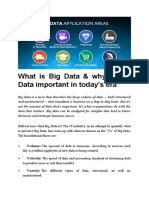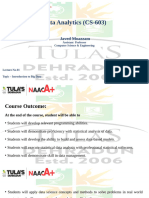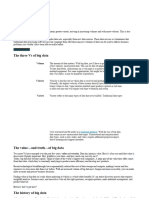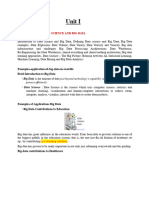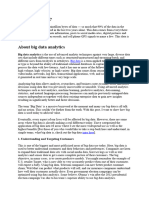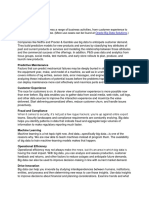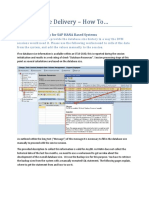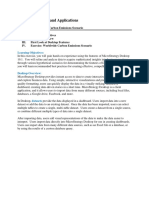0% found this document useful (0 votes)
9 views4 pagesEvolution and Applications of Big Data
The document outlines the evolution of Big Data technology, highlighting key milestones such as data warehousing, Hadoop, NoSQL databases, cloud computing, machine learning, data streaming, and edge computing. It discusses various applications of Big Data across sectors like travel, finance, healthcare, telecommunications, government, e-commerce, and social media, emphasizing its role in improving operations and decision-making. Additionally, the document lists advantages of Big Data, including predictive analysis and enhanced customer understanding.
Uploaded by
seceh93562Copyright
© © All Rights Reserved
We take content rights seriously. If you suspect this is your content, claim it here.
Available Formats
Download as PDF, TXT or read online on Scribd
0% found this document useful (0 votes)
9 views4 pagesEvolution and Applications of Big Data
The document outlines the evolution of Big Data technology, highlighting key milestones such as data warehousing, Hadoop, NoSQL databases, cloud computing, machine learning, data streaming, and edge computing. It discusses various applications of Big Data across sectors like travel, finance, healthcare, telecommunications, government, e-commerce, and social media, emphasizing its role in improving operations and decision-making. Additionally, the document lists advantages of Big Data, including predictive analysis and enhanced customer understanding.
Uploaded by
seceh93562Copyright
© © All Rights Reserved
We take content rights seriously. If you suspect this is your content, claim it here.
Available Formats
Download as PDF, TXT or read online on Scribd
/ 4




